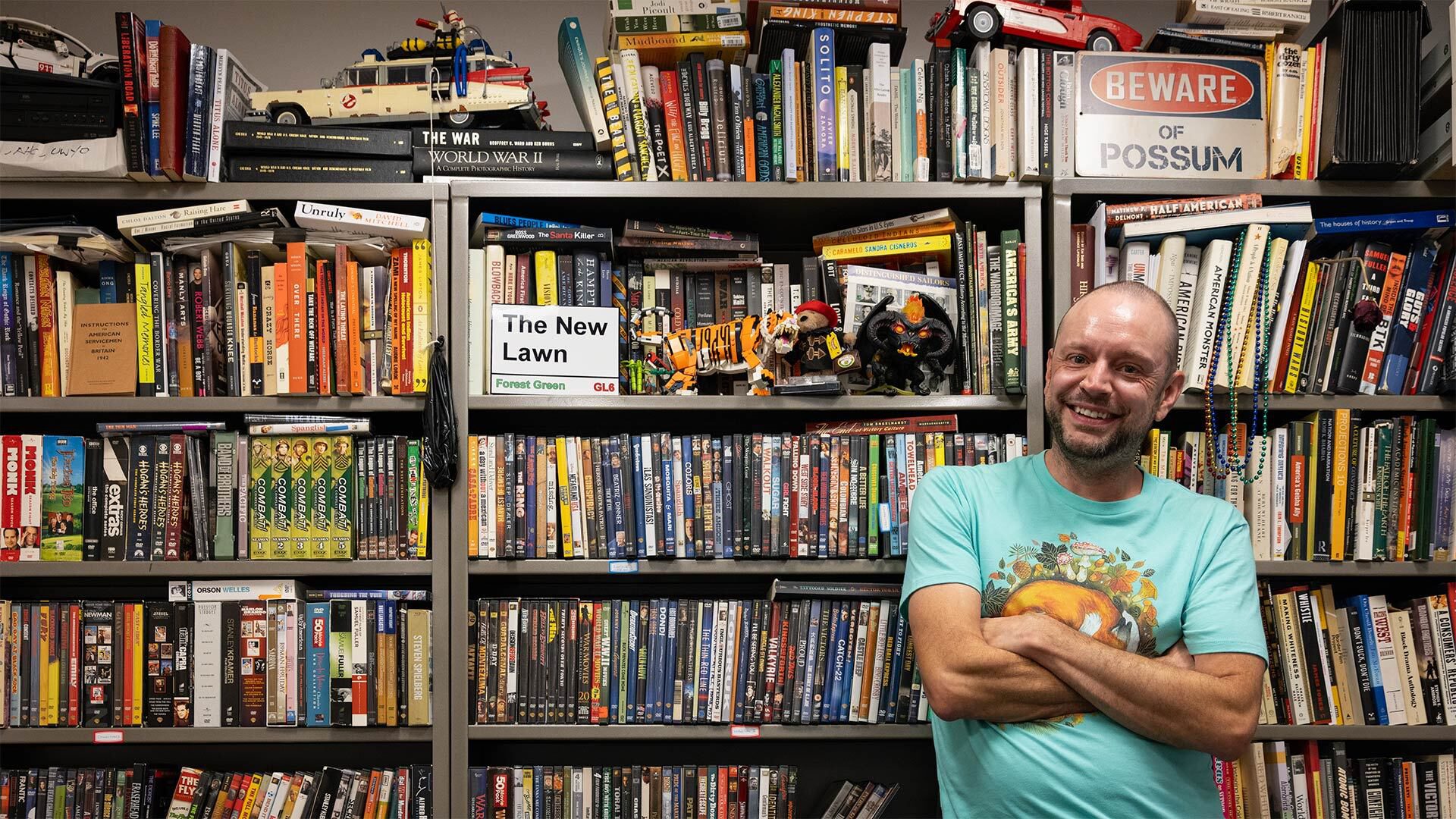- October 06, 2025
- By Karen Shih ’09
When Robert Chester was a student visiting his professors' offices, he loved peeking around to catch a little insight into their personality. Nothing was more disappointing than someone with just a computer, fluorescent overheads and beige paint on plain walls.
Terps won’t find that in his Tawes Hall space. His shelves are stuffed with hundreds of DVDs and books. Old-timey posters advertising the coming releases of 1947’s “Crossfire” and 1963’s “X: The Man with the X-ray Eyes” cover his green walls. Add in all the Lego sets, some organized, some haphazardly scattered in a corner, and it's reminiscent of a cozy, lived-in Hobbit den (never mind the stuffed Gollum).
Everything in the office goes back to Department of American Studies senior lecturer’s love of movies, both in his personal and academic lives. As a film historian, he explores how popular media sways public perception of different topics across the United States, from the military to Latinx populations.
“People get their history from discourse,” said Chester. “If American soldiers are always portrayed as being benevolent and lovely, that’s an impression that sits with people. … If Central America is represented as a place full of dangerous, corrupt and violent people, that will shape the way some people view Central American immigrants who come to the U.S.”
Chester explains how an Englishman wound up teaching American studies, why he still prefers physical media in the age of streaming and why a half-finished Lego peacock is perched on his desk.
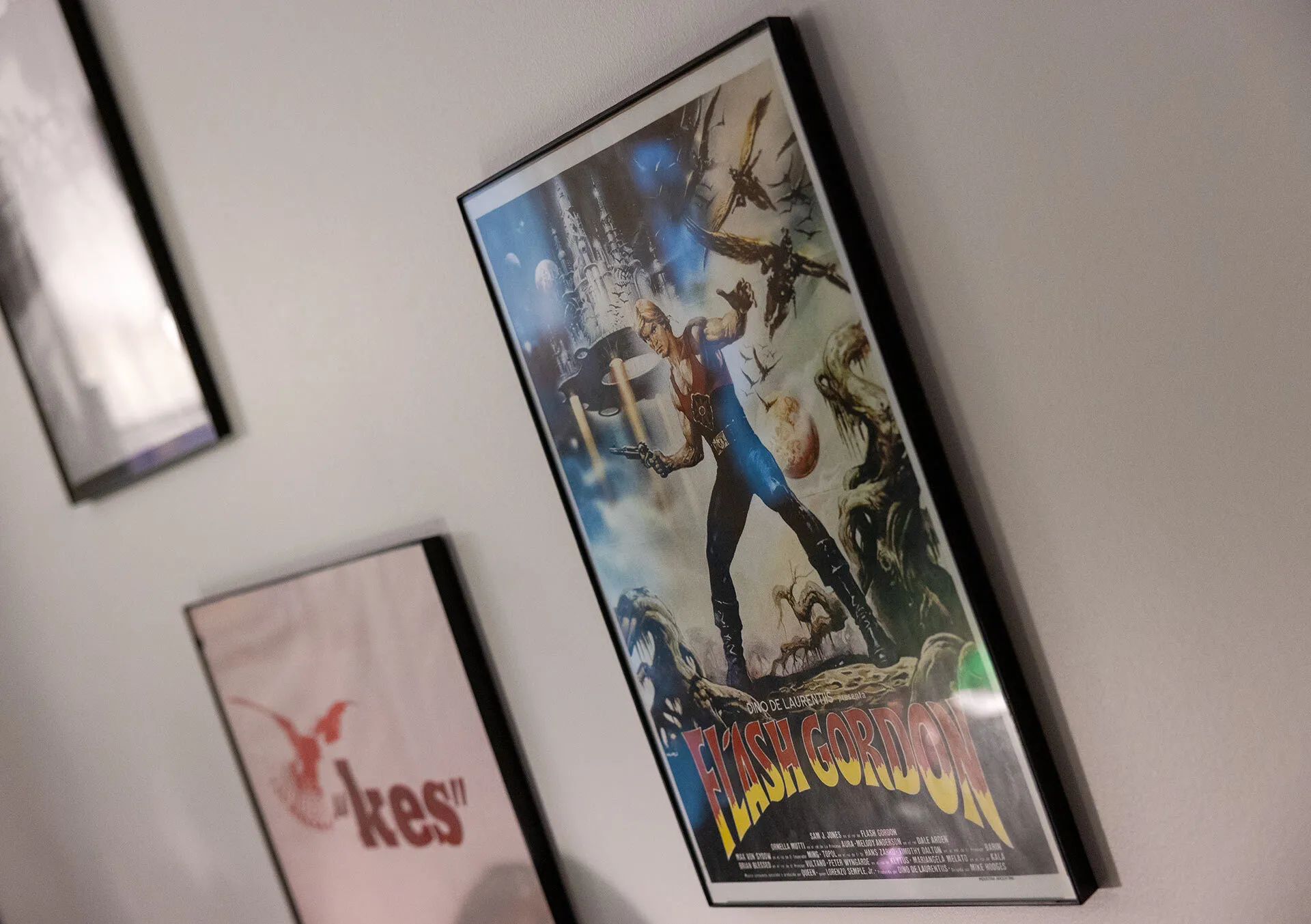
“Flash Gordon”
What sparked Chester’s interest in American pop culture was his dad recording the campy 1980 movie “Flash Gordon” off the television via his Betamax VCR. As a kid, he watched it 500 times, he estimates. That (and “The Dukes of Hazzard”) somehow got him into American history, and eventually, to the United States for graduate school.
“It’s part of my obsessive nature,” he said. “I won't just like a movie or an album. I'll like it and like it and like it and like it and know everything I can about it.”
Along the wall are other posters for lesser-known movies that drew him in: “Kes,” a British coming-of-age story, and “El Norte,” about two Indigenous youths who flee Guatemala in the 1980s. His latest fascination is 2018’s “Possum,” which he calls “the best-acted horror film I’ve ever seen,” about a man who creates an odd, spider-like puppet that he can’t get rid of. Chester even got a tattoo of the spider and has another clinging to his bookshelf.
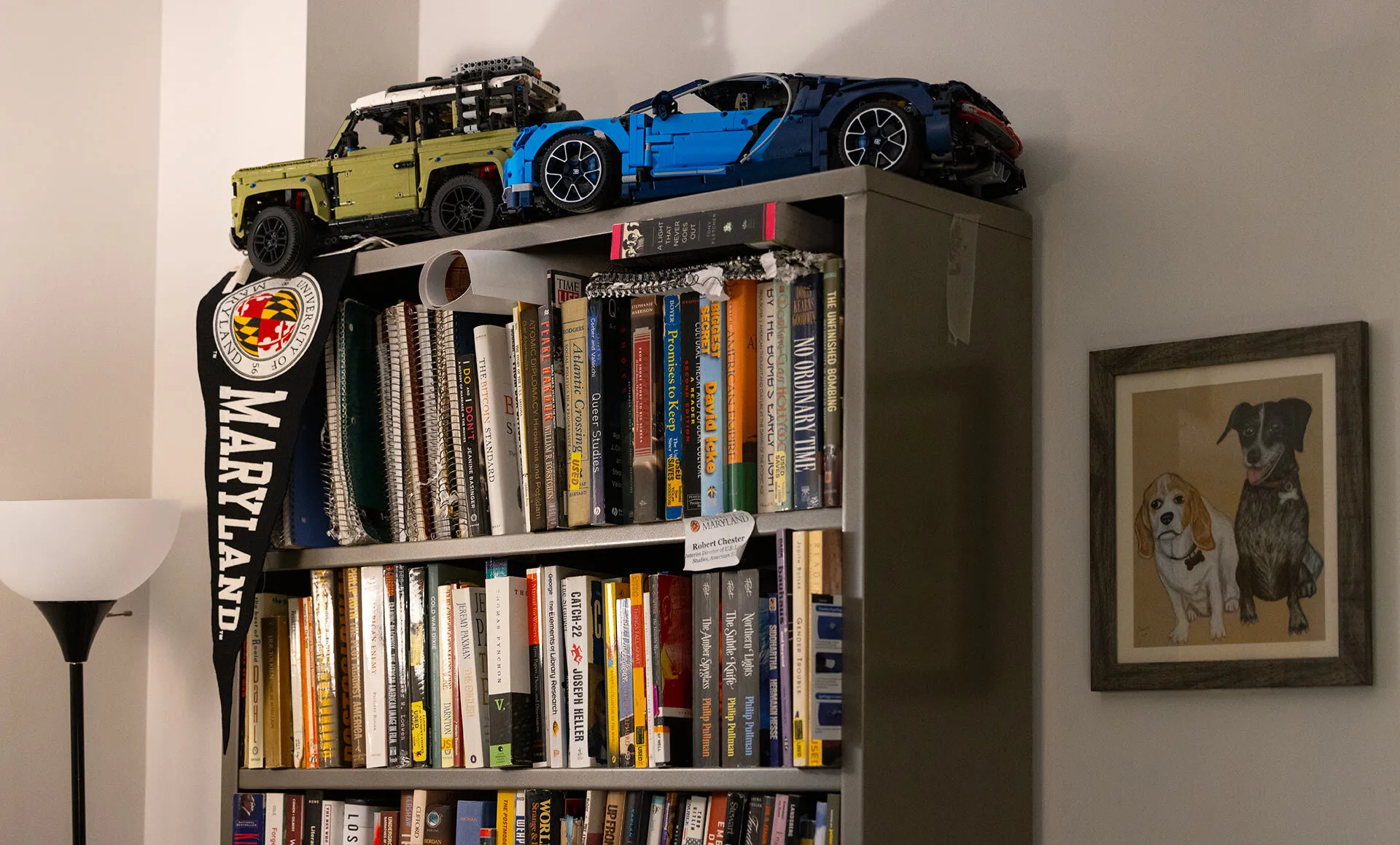
Overflowing Bookshelves
“I like objects,” Chester said. “It changes your relationship to something, to hold the book, to look at the album sleeve, to put the object on the turntable. You develop a closer feel for it.”
In the ephemeral world of streaming, owning something means he’s not at the mercy of a company’s deals when he wants to watch his favorite show or introduce his students to an indie film. Across his shelves, DVDS and even VHS tapes are categorized: World War II, Alfred Hitchcock, John Wayne, British, horror and more, amassed through years of frequenting secondhand shops and “grubby little corners of the internet” for more obscure media. His fixation on the physical extends to books: “I’ve never read a book on Kindle and I never will.”

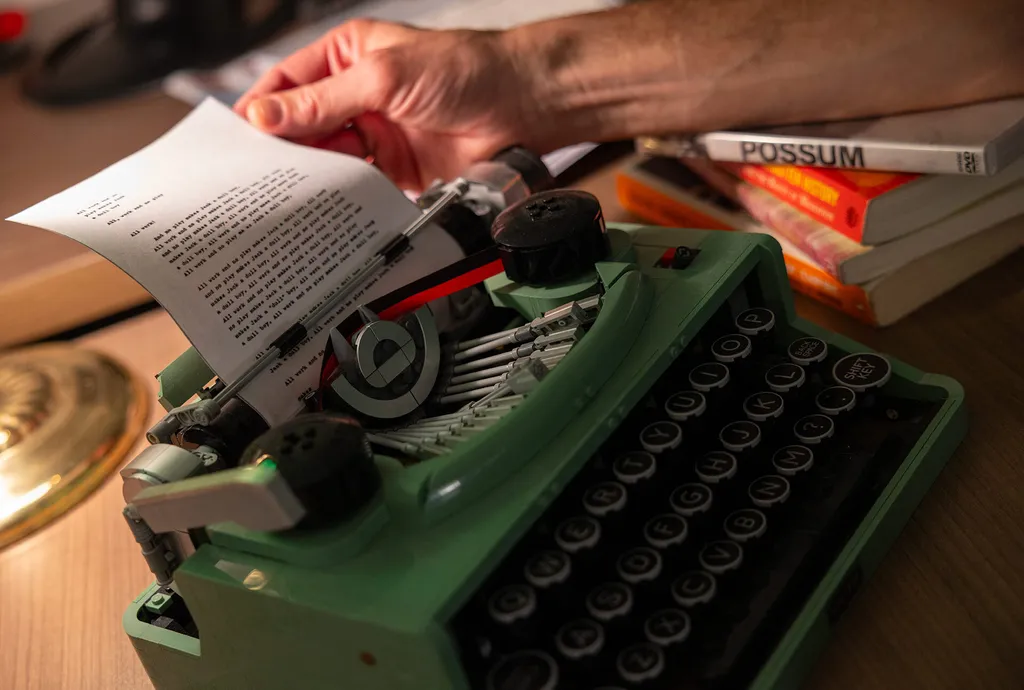
Bricks on the Wall
Elaborate, completed Lego sets—a mint-green typewriter on his desk, a mini player piano on a shelf, the “Stranger Things” reverse world—surround Chester throughout his office. He started about 10 years ago, fresh off a divorce and seeking a new hobby. First, he built the Millennium Falcon with a friend in England, then bought the massive Orthanc Tower set from “Lord of the Rings.” He likes the flowers as gifts (“you don’t have to water them!”) and has a half-made peacock on his desk with pieces any student can work on when they come to office hours.
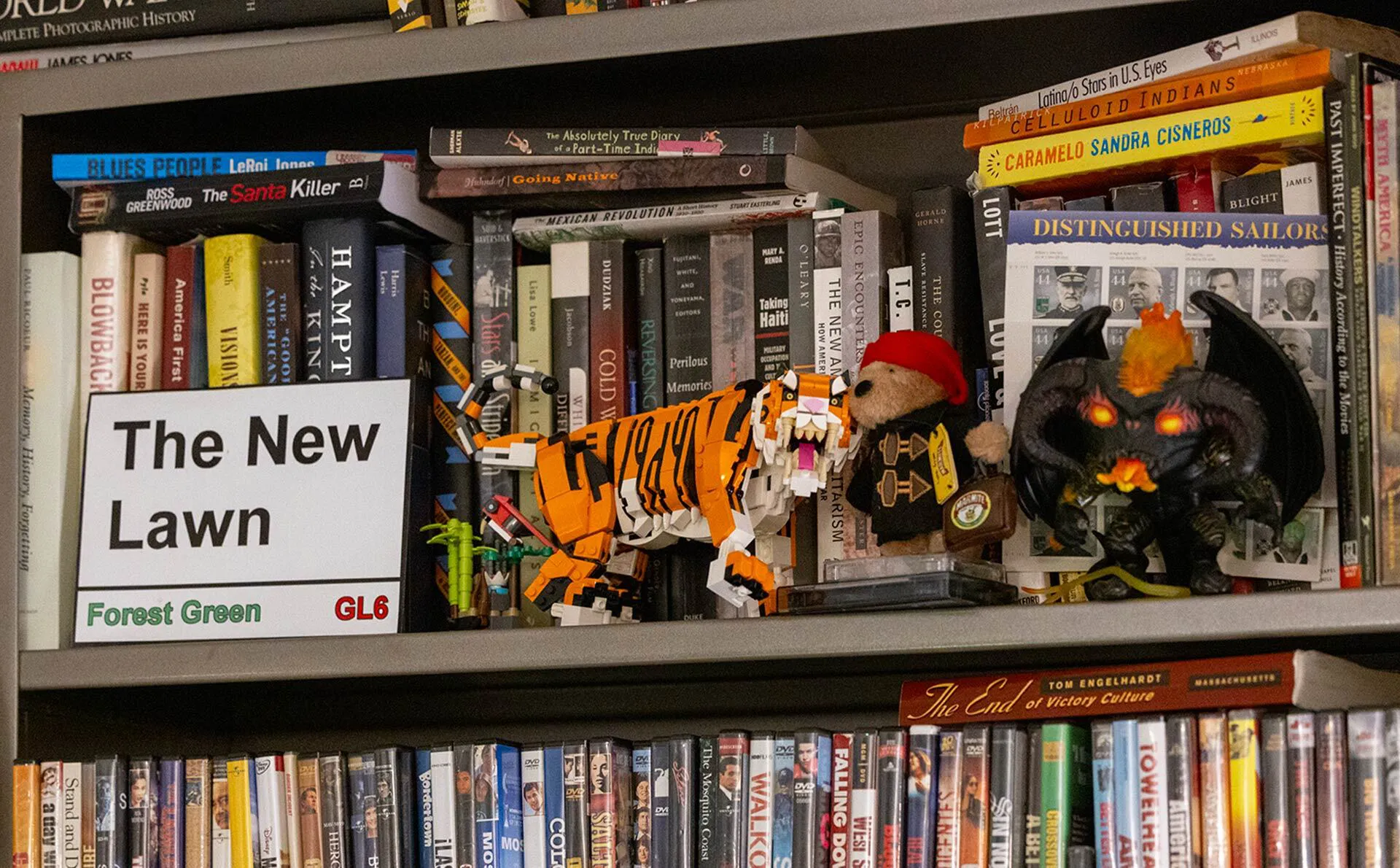
“The New Lawn” sign
The Forest Green Rovers, based in Gloucestershire, England, is Chester’s hometown football club. He hasn’t seen the team win in person for about 10 years, but that doesn’t sway his affections. “If there’s no peril, there’s no joy.”
“The Vanishing American” poster
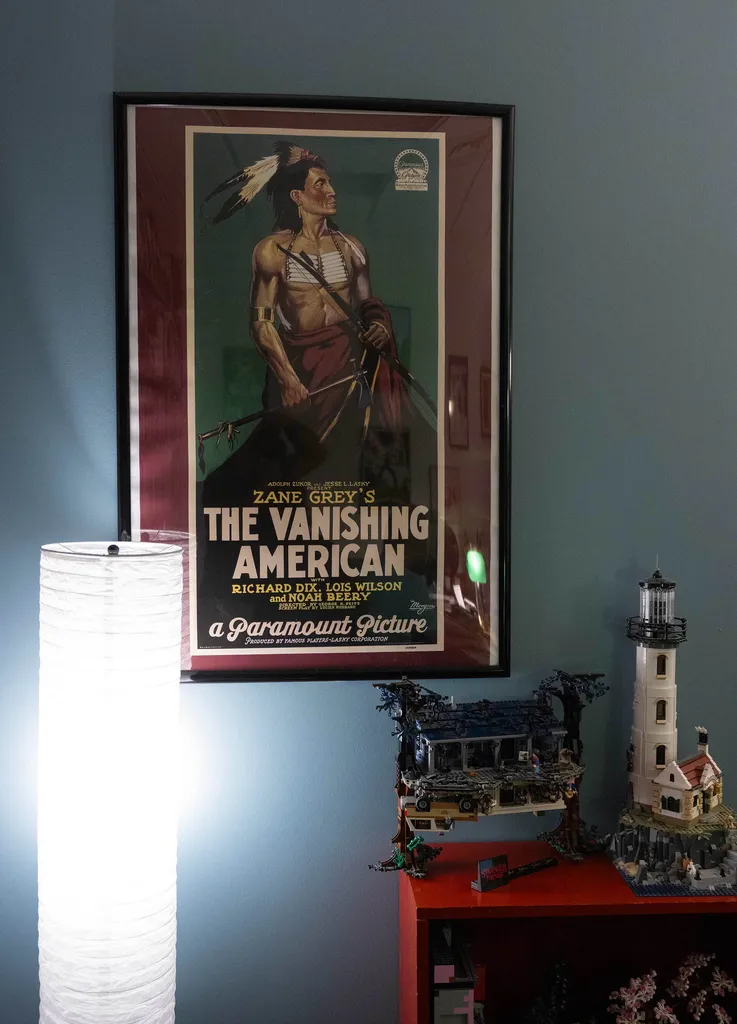
The 1925 silent film is surprisingly sympathetic to Native Americans, but “vanishing isn’t something you do on your own, you know?” Chester said. He notes that some of the earliest moving pictures featured Native dances and buffalo on the plains—a bit of “imperialist nostalgia” as Indigenous populations dwindled after the Colombian Exchange.
Chester starts with that movie in his “Native Americans and U.S. Cinema” class, then moves on to 1939’s “Stage Coach,” which features “very standard-issue demonization of Natives.” Then, he introduces students to modern-day films that tell more nuanced stories, like “Older Than America,” on the legacy of Catholic boarding schools, and “Beans,” about Indigenous Canadian activists protecting forest land. One compelling recent example: 2022’s “Prey,” the latest movie in the “Predator” franchise, which stars a Native actress and was dubbed into Comanche.
This is part of an occasional series offering a look inside some of the most interesting faculty and staff offices around campus. Think you have a cool workspace—or know someone’s that you’d like to recommend? Email kshih@umd.edu.
Topics
Campus & Community